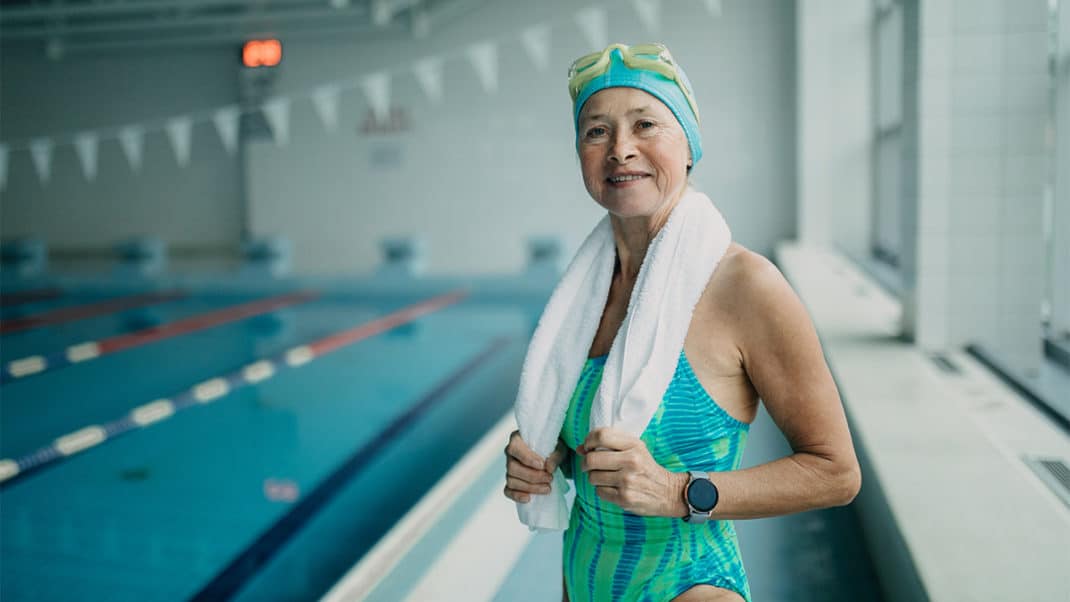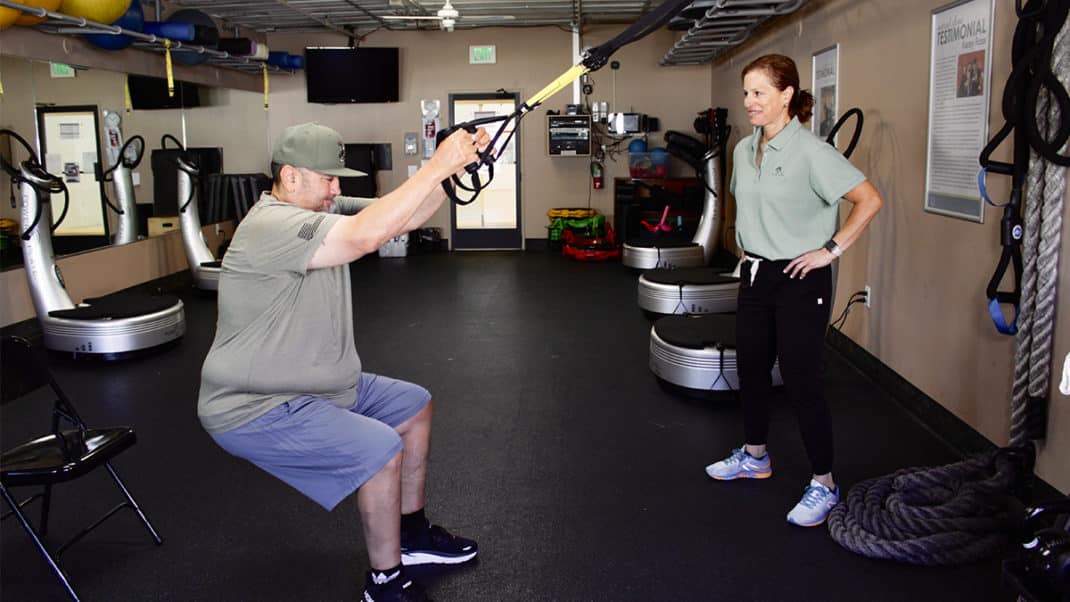Seeing the Difference
IDEA member Jeffrey Grayson Miller helped a blind client get in shape for a new guide dog.
When Caroline Forsberg had to retire her seeing-eye dog of 11 years, Anise, she presumed she would be paired with another guide dog soon. After all, that was the way it had always been. But this time was different. Forsberg, who lives in Albany, New York, was denied a companion because, in the opinion of Guiding Eyes for the Blind, a guide dog school in Yorktown Heights, New York, she was not in good enough physical shape to handle a dog. She had a difficult time walking and getting up and down stairs, among other tests. She needed to prove she was at a functional enough level to walk a dog at least six blocks before they would give her one.
Forsberg was evaluated three times in a 1-year period. Each time she failed to pass the test. Exasperated but still determined, she went to FitStop gym in Albany and turned to IDEA member and personal fitness trainer Jeffrey Grayson Miller for help.
Miller has been a personal trainer for 10 years and was excited to accept the new challenge. He wanted to help Forsberg gain her independence, which had been lost without the assistance of a guide dog. Miller specializes in core conditioning and working with beginners, seniors and golfers. He divides his time between a private country club, two area gyms and in-home sessions. “My training philosophy is to teach functional movement, balance, rotation, coordination, agility, posture and motor skills,” says Miller. “I believe that exercise should have a carryover effect in everyday life. The exercises must be safe [yet] challenging and must highlight multiple planes of motion. A well-balanced exercise program will affect all major facets of an individual’s life, including physical appearance, emotions and mental well-being.”
This mindset proved to be apropos for Forsberg’s situation. Her inability to pass the test for a guide dog profoundly affected her daily life. She now had to use a cane, which she was not used to doing. She felt frustrated and lost. “Caroline missed a lot of work and sometimes would not get out of bed for many days because she was so depressed,” Miller says. “We needed to help her restore physical function so she could also be more functional in her work and social life.”
Miller’s assessment revealed that Forsberg’s needs were simple. She needed to be strong enough to pass the test. His goal was to help her strengthen her weaknesses. “Since the test is conducted outside, walking around the block, we started training the nervous system in that environment,” Miller says. “We also worked on balance, resistance training and stretching. Our gym routine included medicine balls, stability balls, rubber tubing and the BOSU® Balance Trainer, which proved to be a good simulator for an icy mound.”
Miller began training Forsberg twice a week and progressed her slowly to build a strong base. “After a couple of weeks I started going to her house, and we would walk around the block together,” Miller says. “This was important from a practical point of view because that was where she was going to be tested.”
Within 2 months Miller felt confident that Forsberg’s physical condition was on mark. “Her body, balance and walking distance had improved enough to help her pass the test,” Miller says. “However, her mind was sabotaging her body. Since she had failed the test so many times before, she had a hard time believing in herself.”
Even though Miller knew Forsberg’s conditioning was good enough to help her go the distance, he knew he needed to go the extra mile to help her mind match her body. “I gave her some motivational tapes to listen to and spent extra time giving her pep talks and easing her worries,” he says. “And then we waited to hear from the school.”
Guiding Eyes for the Blind gives only 1 week’s notice about the test. Therefore, Miller and Forsberg had to be on the ready. When they did get the call, Miller changed his schedule so that they could meet every day. “I wanted to get momentum on her side,” he says. “At this point I knew her body would pass the test and her mind was almost there.” The day of the assessment, Miller went to Forsberg’s home to give her inspiration. “Then I left, and she was on her own for the test.”
Sure enough, Forsberg did pass the evaluation and after some additional training at the school, she came home with Tattoo, a black Labrador retriever who does not leave her side for a second. Miller now trains both client and canine once a week to maintain the function Forsberg worked hard for. For Miller, the extra time and pro bono work was worth the outcome. “It’s great to see someone get involved in life again.”
Joy Keller
Joy Keller is the director of marketing communications & PR at IDEA, and has also served as executive editor of IDEA Fitness Journal, IDEA Fitness Manager, IDEA Pilates Today, and IDEA Fit Business Success. She is also a certified personal trainer, indoor cycling instructor and yoga teacher (RYT 200).






